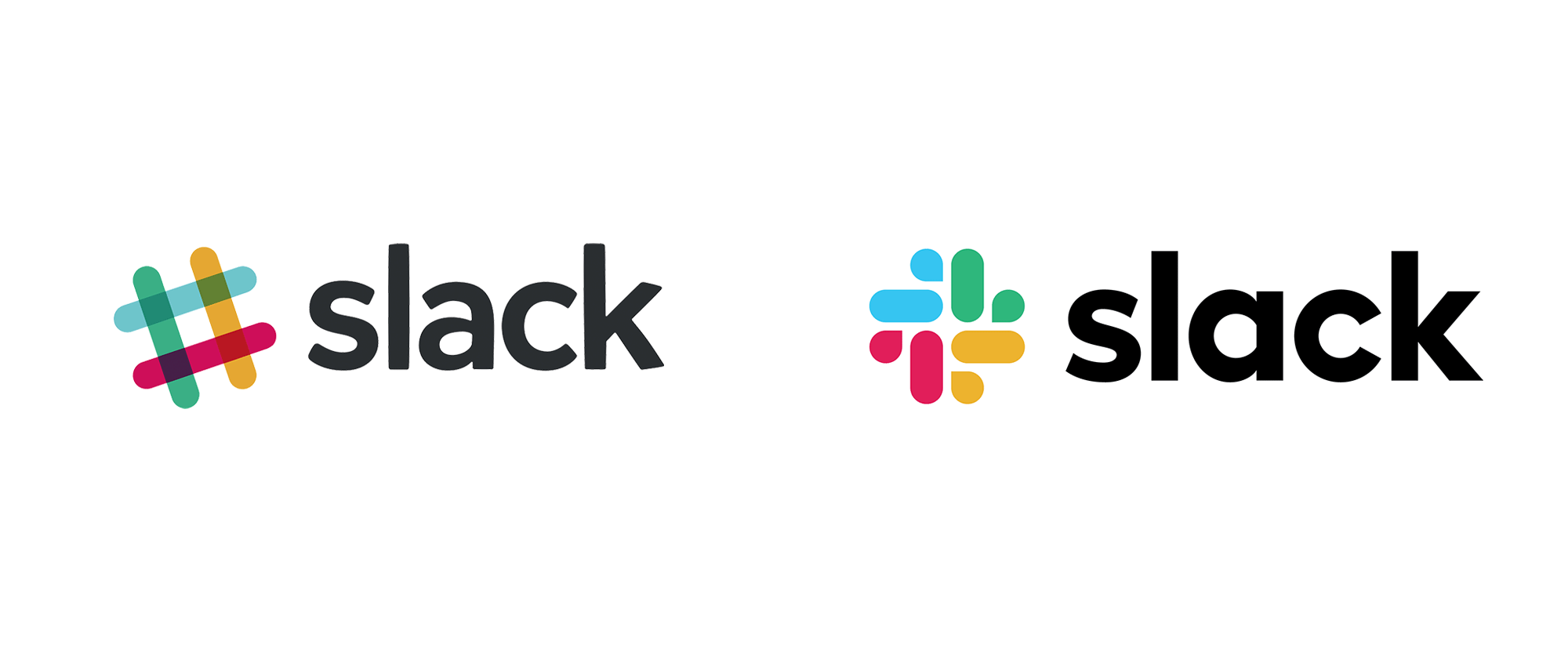Slack, everybody's favorite inter-office messaging app, recently updated their logo. Like just yesterday. Panic ensued as a couple of Impulse’s own wayfinders woke this morning to see a strange new icon on their smartphone screen. It’s like the rug had been ripped out from under us. What happened to the hashtag? Why was Slack doing this to us? The internet went wild too.

Some argued the new logo was an awkward and unnecessary change, while others applauded Slack’s first steps toward evolving their visual identity. As per usual, designers, tech industry professionals and office workers everywhere took to Twitter to share their hot takes.
This is by far one of my favorite write-ups about why a company changed their logo. No bullshit buzzword designerspeak, no golden section diagrams, just a very clear and simple explanation. Well done: https://t.co/Z49drlkKFM
— Mitch Goldstein (@mgoldst) January 17, 2019
New Slack logo is giving me some very church in a strip mall vibes pic.twitter.com/iR1cCUMN2m
— SAL (@sarahannelloyd) January 16, 2019
Slack's new logo looks too...moist pic.twitter.com/1BgKZfk6AL
— Josh Constine (@JoshConstine) January 16, 2019
Tongue-in-cheek aside, it’s clear that logos are sometimes too valuable to mess with. Consumers who develop an affection for a brand often begin their relationship by encountering that brand’s logo. Slack is no different. As a digital product, the Slack logo is the thing we see most. It sits on the screen of our smartphones and in the application dock on our desktops. Our eyes constantly encounter it as we move about our workday.
When a brand decides to update their logo it shouldn’t be done hastily and without solid justification. Fortunately, Slack had plenty. The Slack logo needed an update and the company knew it. According to their own blog post, they make a great business case for why they embarked on a brand refresh.
Our first logo was created before the company launched. It was distinctive, and playful, and the octothorpe (or pound sign, or hash, or whatever name by which you know it) resembled the same character that you see in front of channels in our product.
It was also extremely easy to get wrong. It was 11 different colors—and if placed on any color other than white, or at the wrong angle (instead of the precisely prescribed 18º rotation), or with the colors tweaked wrong, it looked terrible. It pained us.
Creating Consistency
The Slack logo we came to know and love was fun, unique and had helped the company get off the ground to become as ubiquitous in the modern office as standing desks and bean bag chairs. But its use was inconsistent. Across print, television and even in its native environment of digital, things didn’t always look right.
A lack of consistency can create confusion in even the most tech-savvy consumer. And while visual consistency may not seem like it makes that big of an impact, it has the potential to spill over into products and services. If you’re not offering a consistent experience across your entire business, consumers may start to look elsewhere for a solution to their problem.
I think the story here is less “Look! Slack has a new logo!” and more, “Look at how Slack justifies the change!” For such a young company (~6 years) that has enjoyed a meteoric rise to an $8 billion dollar valuation, to recognize the need for a consistent brand so early is completely unheard of. Good design, it could be argued, has been central to Slack’s business model since the beginning. So this objective, introspective detour will only help further solidify their position as a thought leader in the tech industry and larger world of business.
A Lesson From the New Slack Logo
You too can refresh your brand. Whether you’re an established company or a young startup just getting off the ground, it’s never not okay to reevaluate your brand’s visuals. Just be smart about it. The new Slack logo is just a small part of what they’re planning to do over the next few weeks and months. Slack has also redesigned much of their upcoming print campaigns, and will inevitably roll out visual updates to their core product, the messaging platform.
When you have clearly defined goals for a rebrand - increased awareness, visual consistency, full funnel campaign - and you can directly tie those efforts to overall goals for your business - increased revenue, improved customer experience - a rebrand makes sense. Start by taking stock of every piece of branded content you’re producing. Everything from direct mail pieces, to social media graphics. Each piece of your marketing should be created with cohesion in mind so that customers will familiarize themselves with your brand across every medium. A strong, consistent brand can have lasting impact on your customer experience, touching them every step of the journey from awareness through to delight.
 Remington Begg
Remington Begg